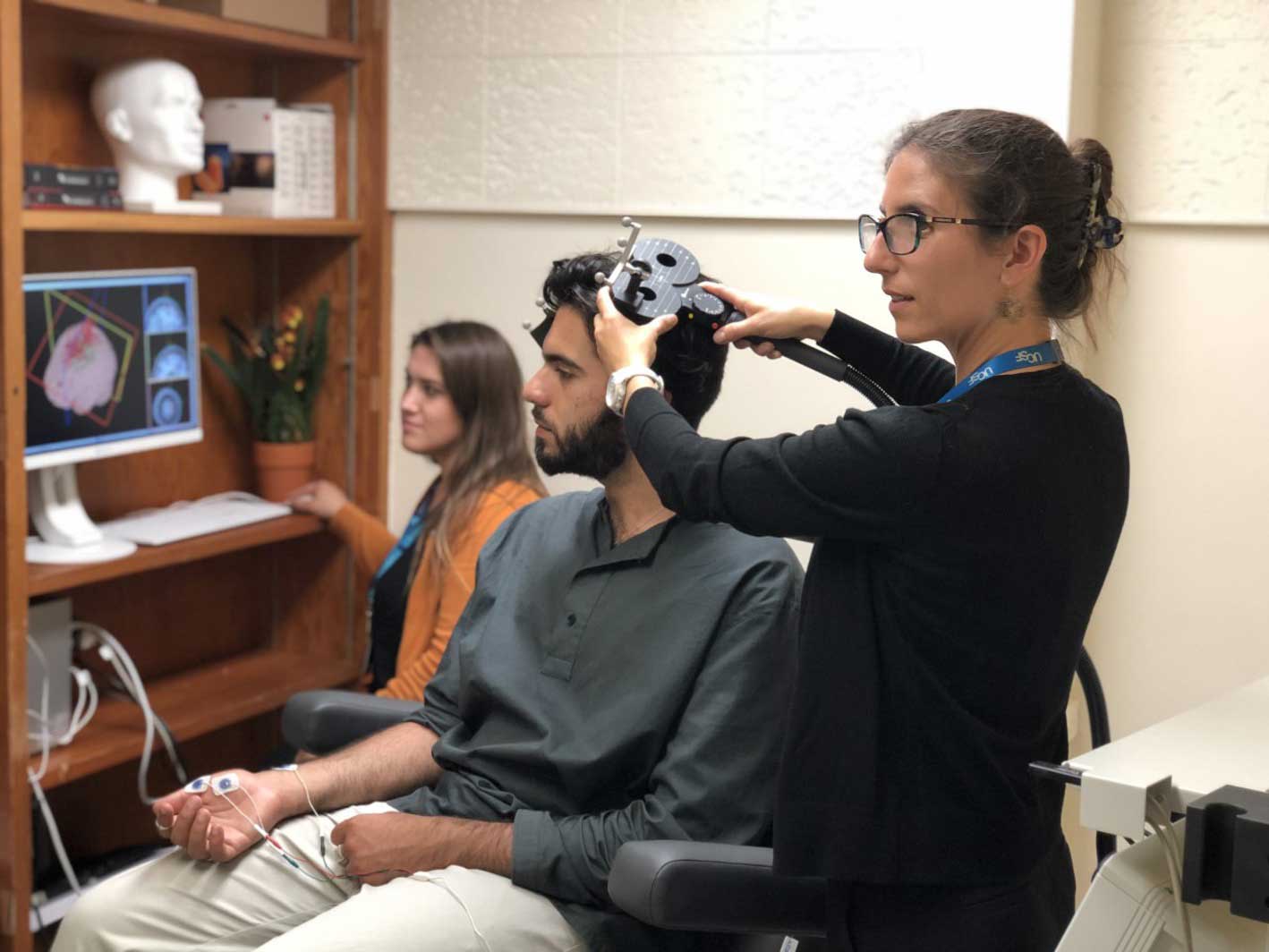Some 30% to 40% of patients do not respond to medications for depression and obsessive-compulsive disorder (OCD), but half of them could be helped by a noninvasive in-office procedure. To mark National Mental Health Awareness Month in May, we talk to psychiatrist Katherine Scangos, MD, PhD, co-director of the Transcranial Magnetic Stimulation (TMS) and Neuromodulation Program at UC San Francisco.
TMS is a logical next step for many patients with an inadequate response to standard treatment, according to Scangos, who is affiliated with the UCSF Weill Institute for Neurosciences and is an assistant professor of clinical psychiatry.
Scangos' own happy place is with patients who have had success with TMS after extended periods of blackness. She marvels at those who have managed to re-engage with family and friends, make plans and pursue activities that have been put on hold.
How does TMS work?
The treatment involves delivering brief magnetic pulses to the brain via an electromagnetic coil applied to the patient's head. This induces electrical currents that stimulate nerve cells in specific areas of the brain. In patients with depression, the dorsolateral prefrontal cortex is targeted, a part of the brain involved in the cognitive processing of emotions. In OCD, it is delivered to other parts of the brain's prefrontal cortex associated with repetitive actions.
Most of our patients undergo a newer version of TMS known as intermittent theta burst stimulation, which takes just three minutes. Since no sedation is required and any side effects are mild - scalp irritation is the most common one - patients can go home or return to work afterwards without recovery time. A treatment course usually runs from 20 to 30 sessions over four to six weeks.

How long does it take to work?
Some patients start to feel better after a week or two. Others may take four weeks or longer. Depression and OCD may be lifelong disorders and follow-up treatments may be required months or years later.
For TMS patients with depression, half may experience at least a 50% reduction in symptoms. For those with OCD, half may experience at least a 35% drop in symptoms.
What are the eligibility criteria for TMS?
Most patients have major depressive disorder and have been through multiple medication regimens and received counselling from more than one psychotherapist before they embark on TMS. Insurance companies usually require that patients with depression or OCD - which often occurs with depression - have had negligible benefits after trying at least two medications. We work with patients ranging in age from about 21 to 70, but we consider everyone on a case-by-case basis.
Who would not be a good candidate for TMS?
Patients with anxiety but without depression may not respond to TMS. People who are pregnant, are at high risk of seizure, or who have epilepsy or implanted metal objects in their head shouldn't receive the treatment.
TMS is not an appropriate first step for patients in crisis requiring imminent relief. The prescription drug esketamine (Spravato) may improve mood within hours or days. Electro-convulsive therapy (ECT) may ease symptoms earlier than TMS and is more effective. But it involves use of anesthesia and electrical stimulation to induce a seizure, making it more invasive than TMS.
Studies are looking to see if the therapy may benefit those with chronic pain, anorexia nervosa, post-traumatic stress disorder, schizophrenia, anxiety and addiction. Findings are encouraging for some but not all of these conditions.
Do patients continue with antidepressants and therapy?
We ask patients to continue with their regular medications and psychotherapy during TMS and for at least a year after treatment. Oftentimes, medications do have some benefit, but they're not enough to mitigate symptoms. We also find that patients are more receptive to psychotherapy as TMS progresses and mood improves.
How do you know when a patient is getting better?
We track patients' scores using a test that ranks symptoms like reduced appetite and sleep, concentration difficulties, sadness, inner tension and slowness initiating everyday activities. And we look for signs that patients' emotions have lifted and they're becoming more communicative and expressive. We find out that they're doing chores, perhaps doing the laundry and cooking dinner. They tell us that they're calling a friend, sitting through a whole movie and watching a TV show that makes them laugh - activities that they haven't done for months or years. It's very gratifying when patients reach this stage of recovery.






